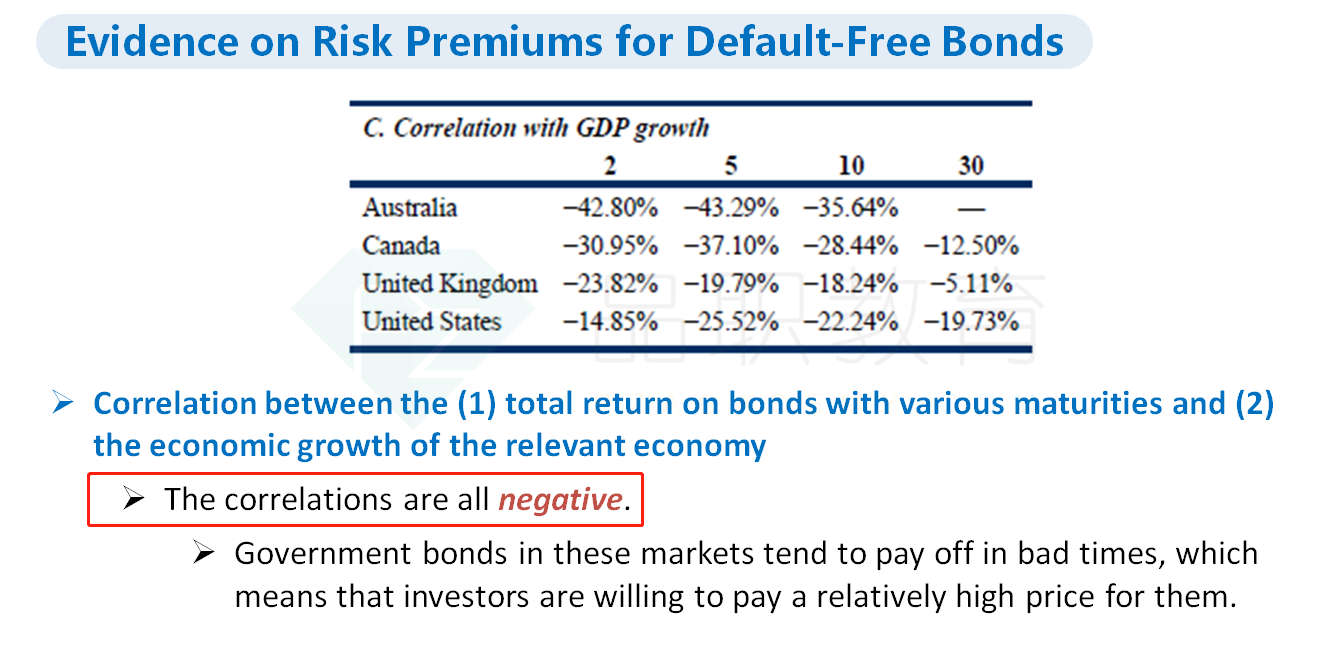NO.PZ2015121810000033
问题如下:
One interpretation of an upward sloping yield curve is that the returns to short-dated bonds are:
选项:
A.
uncorrelated with bad times.
B.
more positively correlated with bad times than are returns to long-dated bonds.
C.
more negatively correlated with bad times than are returns to long-dated bonds.
解释:
C is correct.
One interpretation of an upward sloping yield curve is that returns to short-dated bonds are more negatively correlated with bad times than are returns to long-dated bonds. This interpretation is based on the notion that investors are willing to pay a premium and accept a lower return for short-dated bonds if they believe that long-dated bonds are not a good hedge against economic "bad times".
考点:The Yield Curve on Nominal Default-free Bonds
解析:经济越差,短期债的表现越好,因为短期债是投资者在熊市的避险工具。这里的return指的是持有期收益率,也就是在价格低的时候买入短期债,在经济变差的时候短期债需求变大,价格上涨,因此持有期收益率高。所以经济越差,returns to short-dated bonds越高,两者是负相关的。
这里的upward sloping yield curve可以从两个方面考虑:
一是yield curve反映的是要求回报率(也就是债券的折现率)。由于经济差的时候,短期债比长期债稳健,大家都更愿意去投资短期债,所以对短期债的要求回报率是比较低的,对长期债的要求回报率高,所以yield curve呈现向上倾斜的趋势。
二是经济差的时候,央行会降息,降息对短期利率影响更大,所以yield curve也是向上倾斜的。
因此我得到:经济越差,那个折现因子越小,他俩是正相关关系,选了B。请问老师,这个理解错在哪里呢?我有点没绕过来。她和“经济较差时候,以较低价格买入债券,获得较大的return”是一个意思么?



